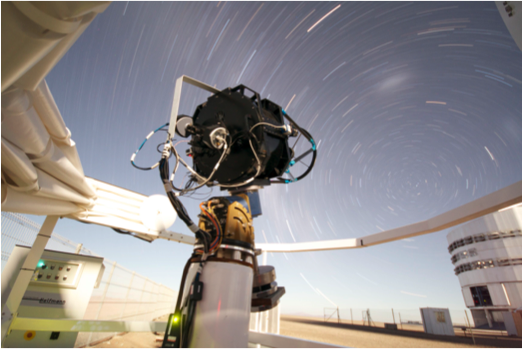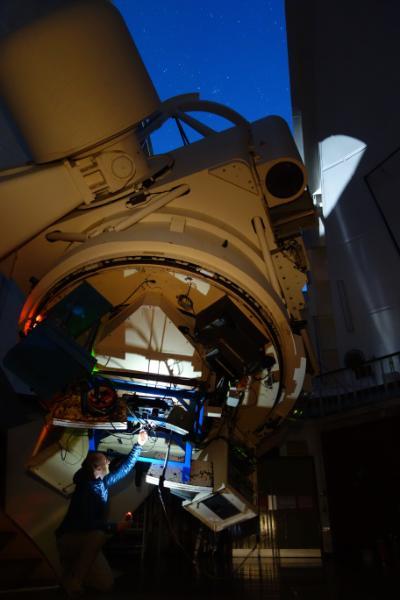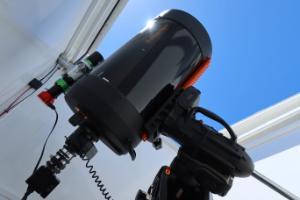Optical Turbulence Monitoring
Contact: James Osborn and Richard Wilson
The free-space optics group has a long history in atmospheric optical turbulence monitoring. For more information see here.
SLODAR
CFAI developed the SLODAR (SLOpe Detection And Ranging) technique for characterization of the vertical profile of atmospheric optical turbulence.
SLODAR is a crossed beams method based on observations of double stars using a Shack-Hartmann wavefront sensor. The optical turbulence profile (OTP) is recovered from the cross-correlation of the wavefront slope measurements for the two stars.
SLODAR systems, based on small telescopes (typically 50cm aperture) , have been employed for characterization of the optical turbulence at the Paranal, ORM (La Palma), Mauna Kea and SAAO observatories. These studies have mainly concentrated on characterization of the 'ground layer' of turbulence in the first kilometer above the site, relevant to the development and application of ground-layer and multi-conjugate adaptive optics systems.

Photo: the 0.5m Surface Layer SLODAR instrument at ESO Paranal, Chile. Credit: Tim Butterley
STEREO-SCIDAR
Both SLODAR and SCIDAR (SCIntillation Detection And Ranging) are triangulation techniques in which the atmospheric turbulence profile above an observatory is recovered from the correlation of either wavefront slopes (in the case of SLODAR), or of scintillation intensity patterns (in the case of SCIDAR), for two target stars with a known angular separation.
We have developed and tested a new instrument based on the well-known generalised-SCIDAR technique. In our instrument, which we refer to as stereo-SCIDAR, the light from each component of a target double star is imaged on a separate detector. In previous implementations of SCIDAR, the scintillation patterns for the two stars were usually superposed on the same detector. We find that imaging the light from each star separately increases the useable magnitude difference of the target stars, resulting in improved target availability and improves the signal-to-noise ratio of the restored turbulence profile. Stereo-SCIDAR also facilitates a simple, automatic, technique for the detection of the velocity of the atmospheric turbulent layers from the cross-correlation data.
We have Stereo-SCIDAR systems operating on the 2.5m Isaac Newton Telescope, La Palma, and on the 1.8m Auxiliary Telescope of the Very Large Telescope Array at ESO Paranal, Chile.

Photo: The Stereo-SCIDAR on the 2.5m Isaac Newton Telescope, La Palma. Credit: Matt Townson
SHIMM (Shack-Hartmann Image Motion Monitor)
The SHIMM is a vertical turbulence monitor capable of operating continuously 24hours a day even in strong turbulence conditions. The SHIMM can measure the atmospheric optical turbulence coherence length, time and angle, the Rytov variance and a low resolution vertical profile.
The SHIMM is built from COTS components and uses an 11″ OTA, providing a cheap and portable solution.

Photo: The SHIMM operating during daytime on La Palma. Credit: James Osborn


/prod01/prodbucket01/media/durham-university/departments-/physics/cfai/CfAI-Webpage-Banner-smaller.jpg)
/prod01/prodbucket01/media/durham-university/departments-/physics/cfai/telescopes-and-instrumentation/DSC03032.jpeg)
/prod01/prodbucket01/media/durham-university/departments-/physics/cfai/telescopes-and-instrumentation/DSC09601.jpeg)
/prod01/prodbucket01/media/durham-university/departments-/physics/cfai/telescopes-and-instrumentation/BDUA5729.1.jpeg)
/prod01/prodbucket01/media/durham-university/departments-/physics/buildings/VT2A9935.jpg)